Free TESOL Journal Article: "Taking Digital Stories to Another Level: Making Documentaries"
by Gilda Martinez-Alba
This article first appeared in TESOL Journal, Volume 5, Number 4, pgs. 743–749. TESOL members can access all issues for free here. To become a member of TESOL, please click here, and to purchase articles, please visit Wiley-Blackwell. © TESOL International Association.
|
Abstract
Using digital stories to have students tell about themselves, share their culture with the class, and learn from each other can help with establishing rapport, shows respect for different cultures, and can be motivating for students and their language teachers. However, what happens after that? After making their first video, students have some basic background knowledge about making a video; therefore, it would be advantageous to use this new knowledge and build on it by taking video making to the next step to make documentaries. Teachers and students could use the structure of a documentary to build language skills while improving their video editing skills to create interesting short documentaries, which can teach about the course content, history, science, health, citizenship, and so on. This article will cover the steps and structure involved in making a documentary, tips for making it look and sound good, and ideas for free editing software for the computer as well as the phone and iPad.
doi: 10.1002/tesj.169 |
A digital story is usually provided by a first person and the focus is on the process of making it rather than on the product or the film itself. It can be thought of as an emerging documentary form, because it provides facts and perhaps even wants to make people think differently about a topic, whereas, in a documentary, multiple viewpoints bring together a topic, and the product is as important as the process of making it (Sanchez-Laws, 2010). Documentaries are also more structured than digital stories. Renov (1993) stated that there are four aspects to a documentary: to uncover, influence, examine, and explain. Digital stories may include some or all of these areas, but tend to be more personal in nature and are not bound to including these.
Fehn and Schul (2011) researched what aspects of documentaries students submitting to the National History Day contest had, and they found that students found images and made video recordings, edited their films, narrated them, included a soundtrack such as music and sound effects, interviewed experts, and provided citations. They concluded that “new technologies can work powerfully to engage the cognitive and affective skills of teachers and students” (p. 40). They can also be used to develop the language domains of reading, writing, speaking, and listening. Another study conducted in an eighth grade history class of students making documentaries showed that students were interested in the process, were motivated, and demonstrated creativity in making the films (Swan & Hofer, 2013). It appears that making documentaries can be a useful method to get students actively learning, and future research will hopefully provide more insight into its uses in the classroom (Fehn & Schul, 2011).
Step One: The Topic
The story is the number one thing to keep in mind when making a documentary. What is the story going to be about? Is it compelling? It has to be something that would be of interest to a certain audience (West, 2010), and that the student making it is passionate about in order for it to unfold into an interesting film. Brainstorming potential topics in class to get students thinking about different ideas would help to get the process started.
continued...
This article first appeared in TESOL Journal, 5, 743–749. For permission to use text from this article, please go to Wiley-Blackwell and click on "Permissions" under "About This Journal."
doi: 10.1002/tesj.169
TC Monthly Giveaway
This month, TESOL is giving away
a free TESOL gift membership and renewal
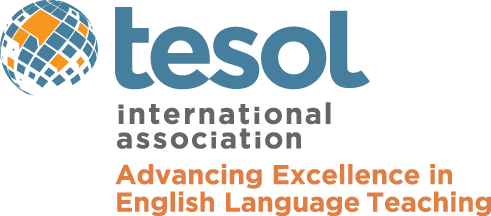
Be sure to keep up-to-date on your professional development in 2015—and allow a colleague or friend to do the same by giving them the gift of TESOL.
Read about the benefits of TESOL membership, consider all the ways you'll better yourself as a professional in the new year, and plan how you'll contribute to the field in 2015.
Click here to enter
Drawing closes 22 December 2014, 11:59 pm EST
TESOL Blogs Interested in writing a blog for TESOL?
Contact Tomiko Breland with your idea or for submission details.
Check out the latest TESOL Blogs:
|
Smartphone Addicts: A Project-Based Learning Activity, by Alexandra Lowe
 In an earlier blog post, I challenged my students to turn an online quiz about technology into a series of questions they could pose to their classmates to gauge the extent of their obsession with their smartphones and other electronic devices. This semester, we moved the idea of a smartphone survey out of the safe confines of the classroom and into the community as part of a project-based learning activity designed to promote speaking English outside of class. Here’s how:... Read More. In an earlier blog post, I challenged my students to turn an online quiz about technology into a series of questions they could pose to their classmates to gauge the extent of their obsession with their smartphones and other electronic devices. This semester, we moved the idea of a smartphone survey out of the safe confines of the classroom and into the community as part of a project-based learning activity designed to promote speaking English outside of class. Here’s how:... Read More.
|
|
Leap.it: A Visual Social Search Engine for ELLs, by Tara Arntsen
 Whenever you search for something online, you probably have a go-to search engine, like Google, that can help you out with anything you could possibly imagine. You likely view the list of results in the traditional link and brief summary format. This might very well work for you, but for English language learners, that is a lot of text to sort through, so next time you have your students in the computer lab or doing research at home, send them to Leap.it. Whenever you search for something online, you probably have a go-to search engine, like Google, that can help you out with anything you could possibly imagine. You likely view the list of results in the traditional link and brief summary format. This might very well work for you, but for English language learners, that is a lot of text to sort through, so next time you have your students in the computer lab or doing research at home, send them to Leap.it.
Leap.it is a new search engine that provides a totally different kind of search experience. Read More. |
|
Teaching ELs to Read Nonfiction Texts, by Judie Haynes
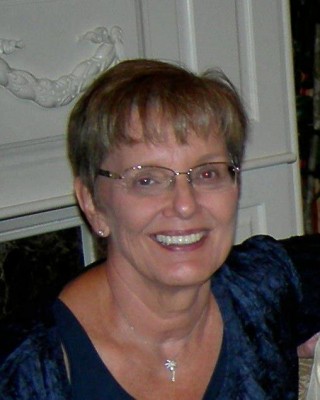 In previous blogs, I discussed the advantages of Reading Workshop in helping ELs learn to read in English. I especially recommend this kind of reading instruction because of the following benefits to ELs. They can read books that they have selected themselves from a library that is at their English language and reading levels, gradually become more independent as readers, and learn strategies that replicate reading environments outside of the classroom. In previous blogs, I discussed the advantages of Reading Workshop in helping ELs learn to read in English. I especially recommend this kind of reading instruction because of the following benefits to ELs. They can read books that they have selected themselves from a library that is at their English language and reading levels, gradually become more independent as readers, and learn strategies that replicate reading environments outside of the classroom.
In today’s blog, I will show how good readers determine the importance of information in a nonfiction text. Read More.
|
|
Connecting Career Education, Women, and TESOL Leadership, by Kevin Knight
 Hello, ESPers worldwide! Hello, ESPers worldwide!
How do you prepare your female students for success in the workplace? A Ted Talk that addresses gender inequality in workplace training recently inspired me. That TED Talk, titled “The Career Advice You Probably Didn’t Get,” provides ESPers with training material. Further, the video applies to the leadership development issue in TESOL International Association. In this TESOL Blog post, I will explain these connections. Read More. |
TESOL Bookstore

NEW from TESOL Press!
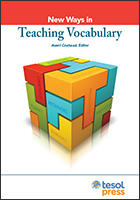 New Ways in Teaching Vocabulary, Revised New Ways in Teaching Vocabulary, Revised
Edited by Averil Coxhead
Containing more than 100 step-by-step activities that fit any context, learner, proficiency level, or technology, this revised volume covers the most recent developments, which lend value and ease to teaching vocabulary.
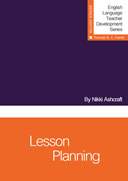 Lesson Planning Lesson Planning
Nikki Ashcraft
Effective teaching begins with effective lesson planning. This easy-to-follow guide discusses the many approaches to lesson planning, addresses both theoretical and practical issues, and provides sample lesson plans and examples.
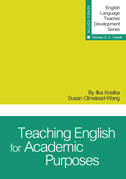 Teaching English for Academic Purposes Teaching English for Academic Purposes
Ilka Kostka and Susan Olmstead-Wang
Why do students feel that mastering academic English is difficult? This book shows how learning academic language can be achieved by developing a set of skills that can be honed with practice, effective instruction, and motivation.
|
 |
|
|
 |
| Assistant Professor in Linguistics (TESL/SLAT), California State University, Fresno, California USA
Assessment Director, Center for English as a Second Language, University of Kentucky, Lexington, Kentucky USA
English as a Foreign Language Lecturer, University of Fribourg, Switzerland
English Language Learner Teachers, Cesar Chavez Public Charter, Washington, DC USA
Lecturer (Full Time), Foundation Program Department of English, Qatar University, Doha, Qatar
Want to post your open positions to Job Link? Click here.
To browse all of TESOL's job postings, check out the TESOL Career Center. |
 |
|
 |
| ADVERTISEMENT |
 |
 |
|